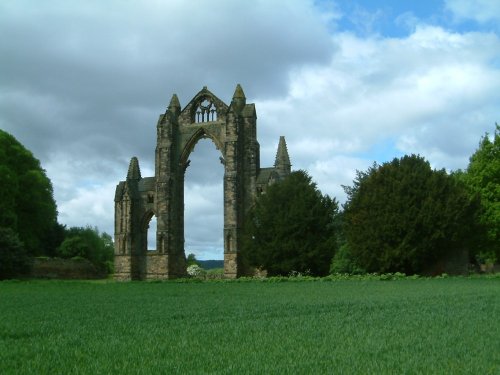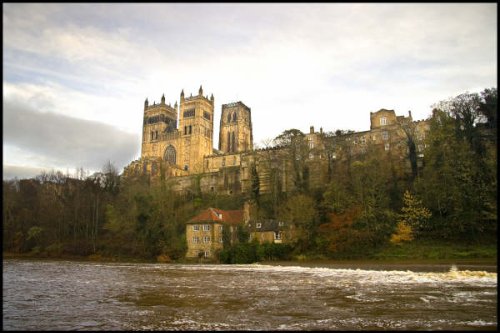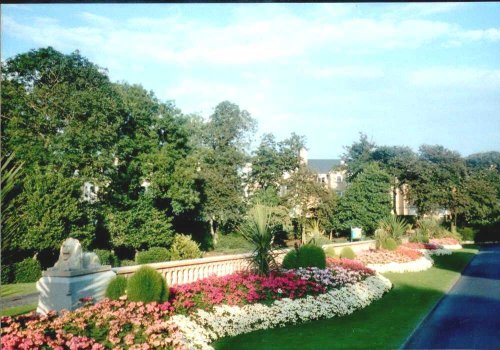Pictures of Hartlepool
About Hartlepool
This is an ancient seaport and county borough which merged with its Victorian neighbour, West Hartlepool in 1967. It was not so much a marriage but more a reconciliation, for West Hartlepool was built in the 1830's by Ralph Ward Jackson in protest of increased coal shipment charges at the senior port. However, the town is distinctly older than this with the earliest recordings beginning in the 7th century when the Bishop of Lindisfarne requested a religious house be built on the headland north of the harbour.
The history of the town includes the abbey being destroyed by invading Danes, the granting of a charter by King John in 1201, and the fact that in the Middle-Ages it was a walled town. Relics of the old walls can still be seen. The town resounds to legends of the Napoleonic Wars, when the only survivor of a French ship wrecked offshore, a pitiful little monkey, was hanged by loyal fishermen!
Visitors can see Georgian and Victorian houses clustered around the 12th century Church of St. Hilda, named so for the second abbess of the earlier abbey who founded Whitby Abbey. The church is quite beautiful, it is rich with church treasures - and is a "must see" for any visitor.
The 19th and 20th centuries where a time of industrialisation for Hartlepool. The railways arrived in 1847, with docks being established around its terminus. The earliest ironworks arrived in 1838, with shipyards following in the 1870's. By the early part of the 20th century Hartlepool had 42 ship-owning companies, who by 1913 shared responsibility for 235 ships. Thus the town was a prime target for German warships and it was shelled in 1914 when over 130 people were killed and hundreds more wounded. Return fire damaged three German warships. Daringly, the Germans attempted to repeat the attack in January 1915, this led to what is now known as the Battle of Dogger Bank.
The 1930's brought the Depression and the town entered the doldrums. A turn-about arrived in the devastating form of World war II when steel and shipbuilding, the pre-requisites of war became all important and in great demand. Despite the surrounding trauma of war Hartlepool began to prosper again.
By the 1960's the town was once again depressed, with the last ship to be built in Hartlepool leaving its waters in 1961. The climb-back to stability has been long and harsh for many, but by 1968 Hartlepool was revived by the opening of a new retail shopping centre, opened by Princess Anne. Since then old parts of the town have been demolished to make way for new housing developments and more shopping precincts. A new marina was built in the 1990's, and the town's historic quay was re-constructed in 1994 as a Napoleonic Seaport. This has since been re-packaged and presented as Hartlepool's Maritime Experience, a place with interest for everyone, including Britain's oldest warship, HMS Trincomalee. Despite her great age, this ship, built circa 1817 in Bombay, is still afloat.
From humble beginnings, through turbulent times Hartlepool has survived to become a modern vibrant place which offers plenty for the visitor to see and do. Its fine museum situated on the quay, gives a brilliant portrayal of the town's seafaring, social and industrial history. Here, there is a real fishing cobble to board, sea monsters, a Celtic Round House building and the first gas illuminated lighthouse. There are models and much more, including a fully restored paddle steamer with an on-board cafe in which to enjoy a leisurely snack.
Hartlepool is not without its famous sports teams, it is renowned for both Football and Rugby with all matches being well attended by loyal fans.
The Town Hall Theatre presents a varied programme of plays, comedy, music and dance, and Hartlepool stages a number of seasonal events. In summer these mostly focus on the sea and in the winter months you can enjoy fireworks and the lovely lights of Christmas.
Fishing is still important, though the industry is not what it once was, and for recreation there is a lively cafe, pub and bar society. Visitors will easily find excellent hotel accommodation, both in and out of Hartlepool, and there is a wide choice of attractive multi-cuisine restaurants, as well as fish 'n'chips!
On the seaward side of the town a magnificent sandy beach stretches along the coast for several miles. At pretty Seaton Carew there is a golf club, crossing the Tees there is racing at Redcar and in Hartlepool itself there are sailing clubs. Venturing beyond the urbanisation is a hinterland with pastoral countryside, interesting little villages and meandering rivers, including the River Skerne.






